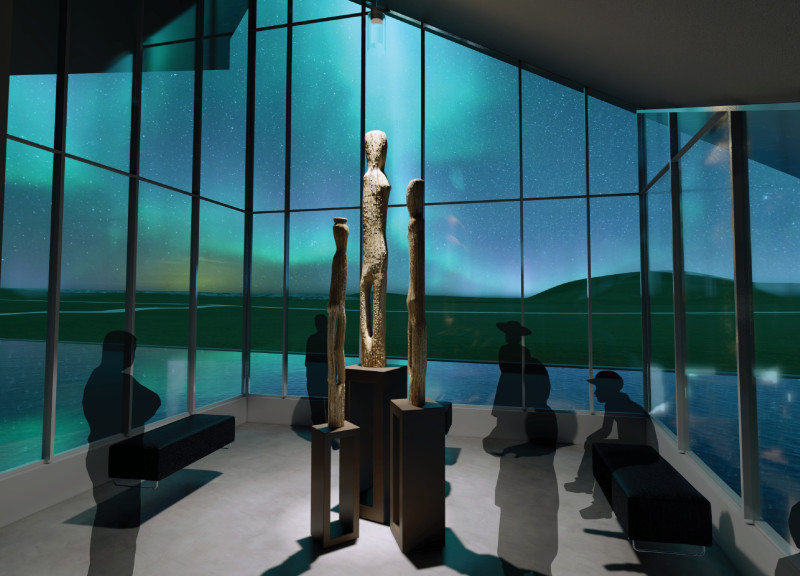5 key facts about this project
The Hverfjall Museum is located in Iceland and emphasizes the use of natural light in its design. Situated in a landscape shaped by volcanic activity and wide-open tundra, the museum’s function is to inform visitors about the region’s geological history. The overall concept focuses on enhancing the experience of light and shadow, creating an engaging atmosphere for exploring its exhibits.
Architectural Concept
The design creates areas that highlight both light and darkness throughout the space. A roof with a folding design not only allows natural light to enter but also provides visual interest. These folds direct visitors as they move through the museum, guiding them towards views of the nearby Hverfjall volcano. In this way, the building’s form interacts with its surroundings, making it a part of the natural environment.
Material and Structure
The structure features a standing-seam metal roof chosen for its strength and practicality in handling rainwater. Non-load bearing walls are made using a metal stud assembly, offering flexibility in how the interior spaces can be used. Concrete load-bearing walls support the overall structure, providing stability. Together, these materials create a modern appearance while also being functional for the museum’s requirements.
Light and Atmosphere
The museum uses a combination of solid and transparent paneling to control how light enters the spaces. This thoughtful arrangement creates varying atmospheres, which are essential for appreciating the exhibits. As visitors walk through the galleries, they experience a blend of bright and shaded areas, making their journey through the museum more dynamic and engaging.
A shallow reflecting pool is included in the design. It spreads light throughout the museum and adds a calming element. This feature not only serves an aesthetic purpose but also emphasizes the relationship between the building and its natural environment. The roof's folds, the thoughtful arrangement of spaces, and the presence of water all contribute to a strong connection between the museum and the unique Icelandic landscape.






















































